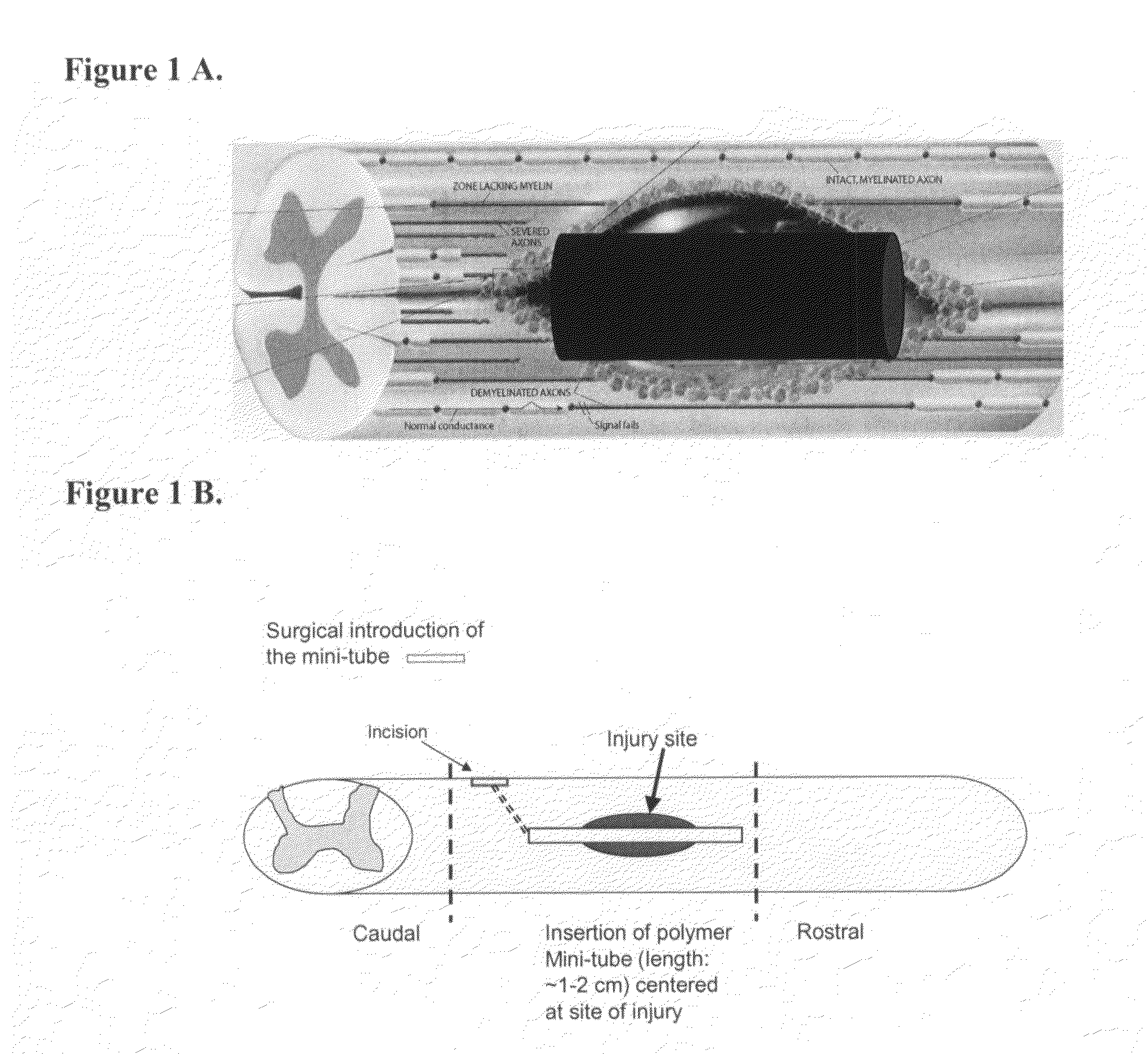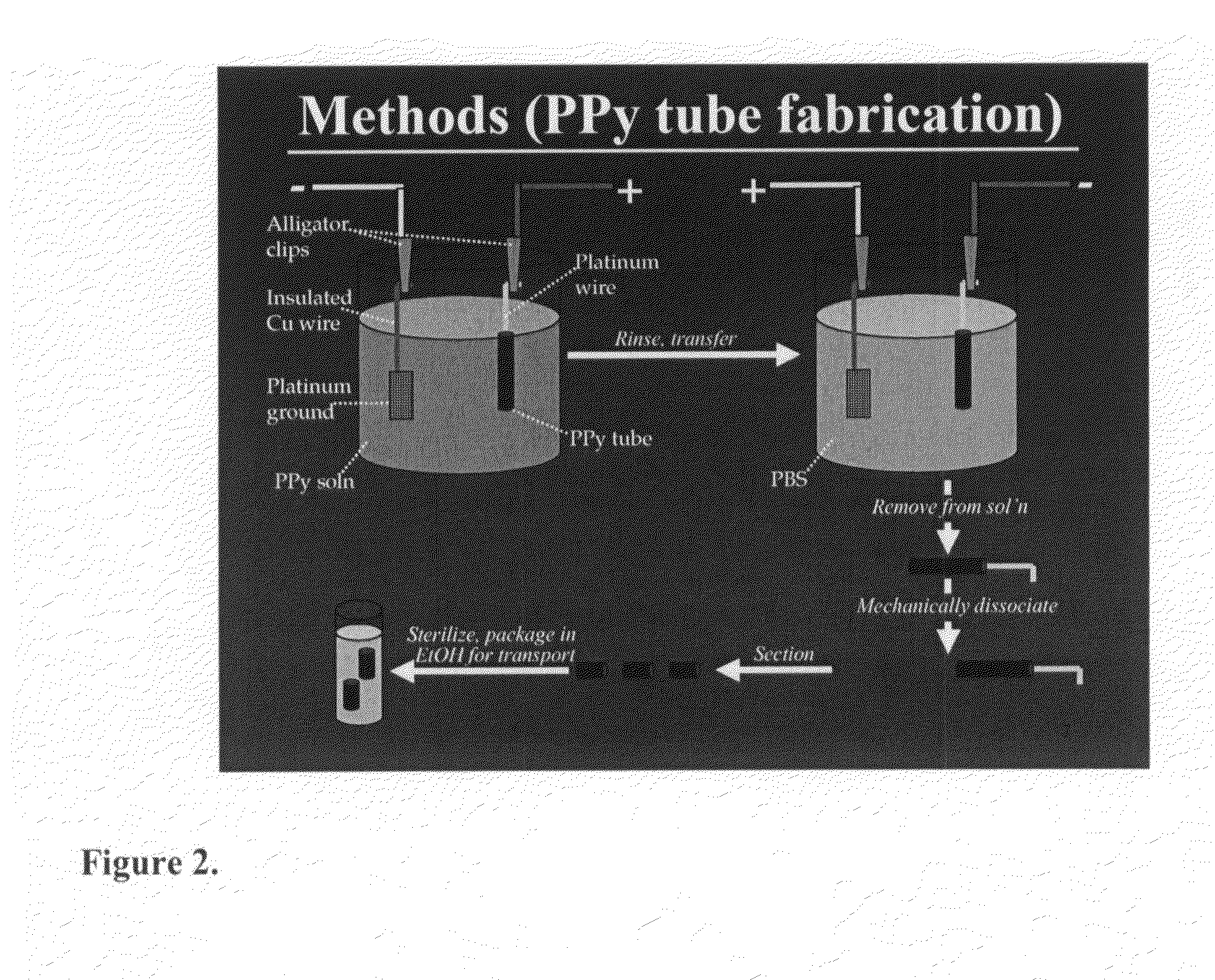Methods and compositions for the treatment of open and closed wound spinal cord injuries
a spinal cord injury and composition technology, applied in the direction of drug compositions, prosthesis, cardiovascular disorders, etc., can solve the problems of further damage to the spinal cord, edema of the cord itself, and damage to the vertebrae, so as to relieve the site of pressure and avoid injury
- Summary
- Abstract
- Description
- Claims
- Application Information
AI Technical Summary
Benefits of technology
Problems solved by technology
Method used
Image
Examples
example 1
Polypyrrole Mini-Tube Fabrication (I)
[0060]Polypyrrole tube scaffolds are created by electrodeposition of erodible PPy at 100 μA for 30 minutes onto 250 μm diameter platinum wire. See FIG. 2. This is followed by reverse plating at 3 V for 5 minutes, allowing for the removal of the scaffold. See FIG. 3 (C and D).
example 2
PPy Mini-Tubes Prevent Post-Primary Injury Cavity Formation in the Lesioned Spinal Cord (n=13, SCI and Control Rats, Respectively)
[0061]MRI images of post-injury cavity development, studied two months post injury, show large cavity formation in the control spinal cord (wherein injured cord was not treated with surgically implanted mini-tube), as compared to the PPy-treated spinal cord. See FIG. 4.
example 3
Open-Field Locomotor Scores for Polypyrrole-Implanted Rats and Lesion Control Rats
[0062]Results from the polypyrrole mini-tube scaffold showed functional locomotor improvement as early as 2 weeks post injury. The amount of functional recovery relative to non-treated controls continues to increase for up to 6 weeks. See FIG. 5. Treated animals are capable of weight-bearing and functional stepping, where non-treated animals show greatly diminished hindlimb function. Magnetic resonance images show that the fluid filled cyst is reduced with a herein described implant. As shown in FIG. 4, the spinal cord is more intact and the cyst is barely visible when treated with polypyrrole. Biodegradable and / or biocompatible polymers are well known in the art and can be used in the present invention.
PUM
| Property | Measurement | Unit |
|---|---|---|
| diameter | aaaaa | aaaaa |
| diameter | aaaaa | aaaaa |
| diameter | aaaaa | aaaaa |
Abstract
Description
Claims
Application Information
 Login to View More
Login to View More - R&D
- Intellectual Property
- Life Sciences
- Materials
- Tech Scout
- Unparalleled Data Quality
- Higher Quality Content
- 60% Fewer Hallucinations
Browse by: Latest US Patents, China's latest patents, Technical Efficacy Thesaurus, Application Domain, Technology Topic, Popular Technical Reports.
© 2025 PatSnap. All rights reserved.Legal|Privacy policy|Modern Slavery Act Transparency Statement|Sitemap|About US| Contact US: help@patsnap.com



